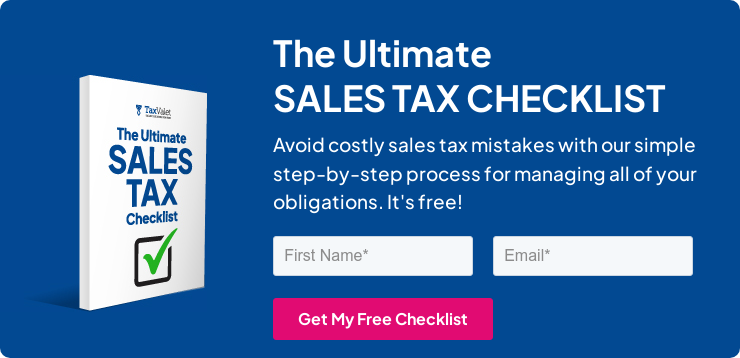Is your supply chain at risk from recent import tariffs? If you’re confused, you’re not alone. As the U.S. trade landscape shifts under evolving policies, many business owners are seeing real operational strain—and in some cases, reconsidering whether they can afford to keep operating in the U.S. at all.
Tariffs are no longer just a political talking point. They’ve become a daily headache for small-to-midsize companies that rely on imported goods.
In this guide, we’ll break down how tariffs affect your supply chain, clear up common misconceptions, and give you actionable steps to protect your business.
💡 New to the topic?
Start with our breakdown of how tariffs affect eCommerce businesses, especially Shopify stores.
What Are Tariffs—and Why Are They Disrupting Supply Chains?
Tariffs are government-imposed taxes on imported goods, typically applied at the border. Their purpose is to discourage foreign competition and protect domestic producers.
But here’s the catch: the businesses paying those tariffs are usually U.S. importers like you.
Tariffs create ripple effects across every link of the supply chain—from sourcing and shipping to pricing and customer relationships. When implemented quickly or without clarity, they introduce a layer of uncertainty that makes planning difficult and cash flow unstable.
Tariff Myths vs. Reality: What Business Owners Often Get Wrong
Many business owners assume that:
- Tariffs mainly hurt foreign manufacturers.
- Domestic businesses benefit across the board.
Reality check: Tariffs often raise prices on imported products and materials, which then eat into your margins, create cash flow bottlenecks, or force price increases that your customers may not tolerate.
In short: Tariffs are more likely to hurt your bottom line than help it.

How Tariffs Disrupt Supply Chains in 2025
If you’re experiencing longer lead times, supplier instability, or inconsistent pricing—tariffs may be to blame. Here’s how:
1. Delayed Shipments and Customs Hold-Ups
Tariffs often trigger extra documentation requirements or misclassification issues at the border. That means longer inspection times, stalled deliveries, and missed fulfillment windows.
This pattern has become especially visible in 2025. In May, import volumes at the ports of Los Angeles and Long Beach fell by 24%—the steepest monthly drop since 2023—as importers scaled back orders in response to rising duties.
2. Supplier Relationship Strain
Foreign vendors may change pricing, cancel contracts, or delay production in response to trade policy uncertainty—leaving you scrambling for backup options.
3. Forced Product Substitutions
New tariffs may require switching SKUs or suppliers. That can mean adjusting product specs, updating compliance paperwork, and retraining fulfillment staff—all costly and time-consuming.
4. Margin Erosion and Cash Flow Pressure
Tariffs are often paid upfront, raising your landed costs. These unexpected fees can throw off your cash flow model or eat into profit margins you weren’t planning to sacrifice.
Industries that rely heavily on imported raw materials are particularly exposed. For example, recent increases in steel and aluminum tariffs have raised concerns across manufacturing and consumer goods. Analysts warn that even everyday items—like canned goods—could see price increases of up to 15% due to the rising cost of metal packaging.
📚 Want more examples?
Read our deep dive on 3 key challenges of navigating U.S. import tariffs.
5 Steps to Prepare Your Supply Chain for Tariffs
Here’s how to get ahead of tariff disruptions without overhauling your operations:
1. Identify Vulnerable SKUs
Start by mapping your top-selling or high-volume SKUs. Where are they sourced from? Are they subject to new or pending tariffs?
2. Explore Tariff Exclusion Options
Some goods are eligible for exclusion or refund through programs run by the U.S. Trade Representative (USTR). It’s worth researching whether your imports qualify.
You can explore exclusion opportunities through the following portals:
3. Evaluate Alternate Suppliers
Now’s the time to assess options from tariff-free countries or domestic manufacturers. Even if you don’t switch today, you’ll be ready if pricing becomes unsustainable.
One strategy gaining momentum in 2025 is the “China+1” approach—where companies diversify sourcing by shifting part of their supply chain to countries like Vietnam, India, or Mexico. According to McKinsey, this model has become essential for reducing single-country dependency and improving supply chain resilience.
4. Consult a Customs Expert
A customs broker or trade advisor can help you reclassify goods, appeal tariff decisions, and manage documentation—saving money and stress.
5. Stay Informed
Bookmark these:
💡 Tax Tip:
In some states, tariff fees and tariff recovery fees are considered taxable. That means you may owe sales tax on the cost of the product plus the tariff amount. It's an easy oversight—and one that could trigger audit risk.
Final Thoughts: Start Small, Think Long-Term
You don’t need to solve every tariff-related issue overnight—but you do need to start thinking about it.
Begin with visibility. Identify which parts of your supply chain are exposed. Then, start taking small, informed steps to build resilience.
Proactively communicating tariff-related price changes via email or website notices can also help preserve trust and avoid confusion.
With the right strategy—and the right partners—you can stay ahead of unpredictable policy shifts and protect your business from avoidable disruption.

Disclaimer: Our attorney wanted you to know that no financial, tax, legal advice or opinion is given through this post. All information provided is general in nature and may not apply to your specific situation and is intended for informational and educational purposes only. Information is provided “as is” and without warranty.
What you should do now
- Get a Free Sales Tax Plan and see how Tax Valet can help solve your sales tax challenges.
- Read more articles in our blog.
- If you know someone who’d enjoy this article, share it with them via Facebook, Twitter, LinkedIn, or email.